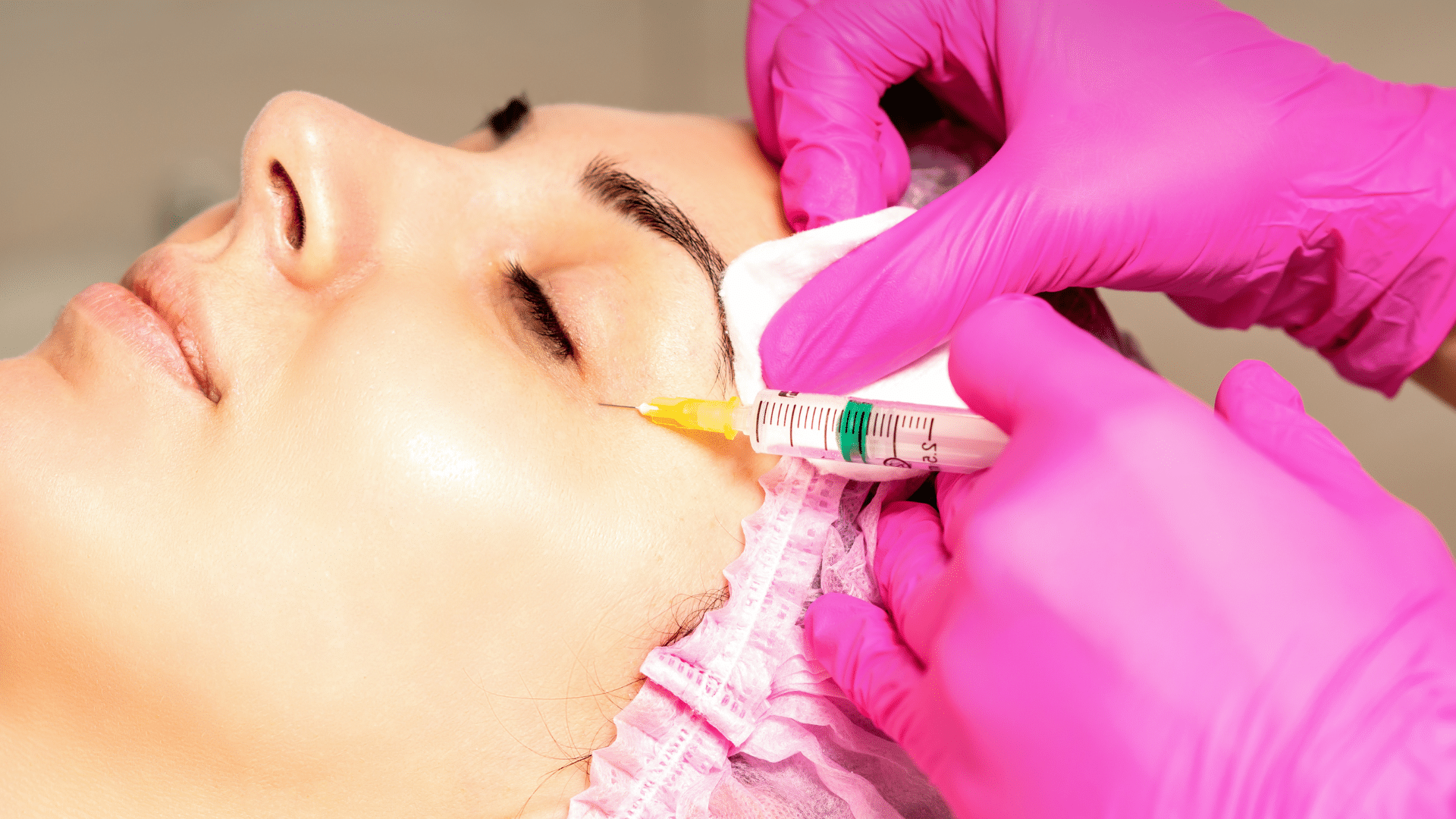
Under-eye bags are a common concern, affecting many individuals as they age. A study revealed that they can become significantly darker and are associated with fatigue, genetics, lifestyle, and other health-related factors that can also influence their presence.
Juvederm, an FDA-approved collection of hyaluronic acid-based dermal fillers, is designed to target specific areas of the face, offering hydration and volume where it’s most needed. Juvederm’s ability to integrate seamlessly with the body’s hyaluronic acid makes it ideal for addressing the hollows and darkness beneath the eyes.
This article will explore how Juvederm effectively addresses under-eye bags, providing a detailed look at its application, benefits, and what patients can expect from the treatment.
Key Takeaways
- Under-eye bags and hollows are common concerns in periorbital rejuvenation, and they can be caused by aging, genetics, or lifestyle factors.
- Treating under-eye concerns requires a delicate approach due to the thin and sensitive skin in the area.
- Juvederm fillers, made of hyaluronic acid, offer a smooth consistency and natural-looking results, making them suitable for under-eye rejuvenation.
- Injection techniques, dosing considerations, and patient selection criteria are crucial for optimal outcomes when using Juvederm fillers for Under-eye rejuvenation.
- Under-eye bags happen when the skin and muscles under the eyes weaken, causing puffiness.
About: Doctor Medica is your trusted supplier of top-quality dermal fillers, viscosupplements, and more for your medical practice. We offer genuine products from leading brands at the lowest prices. Contact Doctor Medica today if you want to buy Juvederm wholesale for your practice.
The Science Behind Under-Eye Bags

The periorbital area, also known as the region around our eyes, includes several key features. These features are the lower eyelid and malar region, where we often see changes like under-eye bags or hollows.
Aging is a big reason people get under-eye bags. As we age, our skin makes less collagen. This process thins the skin under our eyes, allowing fat pads to show more. Fat pads support our eyes better when we are younger.
Recognizing whether someone has bags or hollows is crucial in choosing the proper treatment. The periorbital supports our eyes better, and the orbital rim and the tear trough lose volume over time.
Challenges in Treating Under Eye Concerns
The eye area is fragile and sensitive, so extra care is needed during cosmetic procedures in the periorbital region. Our essential facts mention that a good understanding of anatomy and proper injection techniques are must-haves for dealing with this area.
HA filler injections near the eyes can sometimes lead to unwanted effects like bruising or long-lasting inflammation. These treatments aim to reduce under-eye bags but might cause discomfort or visual changes due to swelling.
Understanding the risks and complications associated with under-eye treatments is equally crucial to setting the right expectations for patients. Clear communication about what Juvederm fillers can and cannot do is critical to patient satisfaction.
Juvederm Fillers for Under Eye Rejuvenation

Juvederm fillers stand out for using hyaluronic acid, which helps restore volume and smooth wrinkles around the under-eye area. This results in a more refreshed and natural-looking appearance. The durability of Juvederm’s results minimizes the need for frequent touch-ups, making it a cost-effective option for periorbital rejuvenation.
Using Juvederm fillers for under-eye concerns offers multiple benefits. These fillers contain hyaluronic acid, which hydrates the skin and improves texture. This component makes the skin under the eyes look smoother and fresher.
Injection Techniques and Dosing Considerations
Juvederm fillers have Under eye, a popular choice for Under eye rejuvenation. They offer a mini under-expensive way to reduce under-eye bags and hollows. Here are the best practices for injecting Juvederm fillers in the under-eye area, focusing on achieving optimal results while ensuring patient safety and comfort.
- Understand the anatomy of the periorbital area well. This knowledge is crucial for avoiding vital structures and correctly placing the filler.
- Choose the correct type of Juvederm filler for each patient. Not all fillers are created equal, and some types work better for delicate under-eye skin.
- Green’s method suggests injecting the filler directly into the area that needs correction, which proves most effective.
- Start with less product to assess how the filler settles, then add more if needed in subsequent sessions.
- Use a blunt cannula instead of a needle where appropriate to minimize bruising and trauma to the sensitive under-eye area.
- Apply gentle pressure with icing immediately after injection as part of aftercare to reduce swelling.
- Before proceeding, discuss realistic expectations with patients and ensure they understand what dermal fillers can and cannot do.
- Assess each patient’s unique facial structure to determine the best injection sites and techniques for a natural-looking result.
- Prepare patients for possible side effects, like minor swelling or bruising, which typically resolve quickly with proper care.
- Follow up with patients after treatment to evaluate results and decide if further adjustments are necessary.
Dosing for under-eye rejuvenation needs careful attention. Experts suggest using the most minor Juvederm filler to avoid swelling or bruising in a sensitive area. It’s about finding the balance—too little may not show results, and too much can lead to complications.
After considering dosing strategies for under-eye rejuvenation, reducing patient discomfort and bruising becomes a key focus. Juvederm injections can lead to some pain and bruises.
Patient Selection Criteria for Optimal Outcomes

To help address concerns about the efficacy of the chosen filler, healthcare professionals can share case studies about their previous patients who received Juvederm. They can also show patients who received Juvederm in the chin before and after the procedure to highlight the filler’s versatility.
Then, doctors can start ensuring they use the suitable filler in the correct spot. This helps avoid problems such as swelling or issues with the lower eyelid. It’s all about matching and discussing patient needs. By doing this, they can choose suitable candidates for under-eye rejuvenation with Juvederm fillers, ensuring safety and excellent results for everyone involved.
Conclusion
Juvederm fillers for under-eye rejuvenation present a valuable option for addressing periorbital concerns. By understanding the science behind under-eye bags, recognizing the challenges associated with treating this delicate area, and implementing evidence-based techniques, medical professionals can achieve optimal outcomes and enhance patient satisfaction and confidence in under-eye rejuvenation with Juvederm fillers.
FAQs
1. What is Juvederm used for under the eyes?
Juvederm helps smooth out those pesky under-eye bags, making you look fresher and more awake.
2. Does getting Juvederm under the eyes hurt?
You’ll feel a quick pinch, but it’s pretty fast and not too bad.
3. How long does Juvederm last when used for under-eye bags?
Expect your Under eyes to stay smooth for 6 to 12 months after getting Juvederm.
4. Can anyone get Juvederm for their under-eye concerns?
Most people can, but you should chat with a doctor first to ensure it’s right for you.
5. How quickly will I see results from Juvederm treatments on my under-eye bags?
You’ll notice a difference almost right away.
References
AEDIT. (n.d.). Eye Rejuvenation Solutions. Retrieved from https://aedit.com/procedure/eye-rejuvenation-solutions
Woodward, J., Cox, S. E., Kato, K., Urdiales-Galvez, F., Boyd, C., & Ashourian, N. (2023). Infraorbital Hollow Rejuvenation: Considerations, Complications, and the Contributions of Midface Volumization. Aesthetic surgery journal. Open forum, 5, ojad016. https://doi.org/10.1093/asjof/ojad016
Urdiales-Gálvez, F., Delgado, N. E., Figueiredo, V., Lajo-Plaza, J. V., Mira, M., Ortíz-Martí, F., Del Rio-Reyes, R., Romero-Álvarez, N., Del Cueto, S. R., Segurado, M. A., & Rebenaque, C. V. (2017). Preventing the Complications Associated with Dermal Fillers in Facial Aesthetic Procedures: An Expert Group Consensus Report. Aesthetic plastic surgery, 41(3), 667–677. https://doi.org/10.1007/s00266-017-0798-y
Related Articles
Joanna Carr
Hyacorp Body Contouring: What to Expect During and After Treatment
Discover what to expect during and after Hyacorp body contouring treatments. Learn about the recovery process and results at Doctor Medica.
Joanna Carr
Juvederm for Neck: Rejuvenation with Hyaluronic Acid Filler
Juvederm fillers offer a non-surgical solution for neck rejuvenation, addressing skin laxity, horizontal lines, and loss of definition.
Joanna Carr
Powerfill vs Sculptra – Which is Better For Body Sculpting?
Compare Powerfill and Sculptra fillers to find the best body sculpting option for your goals and desired results.


